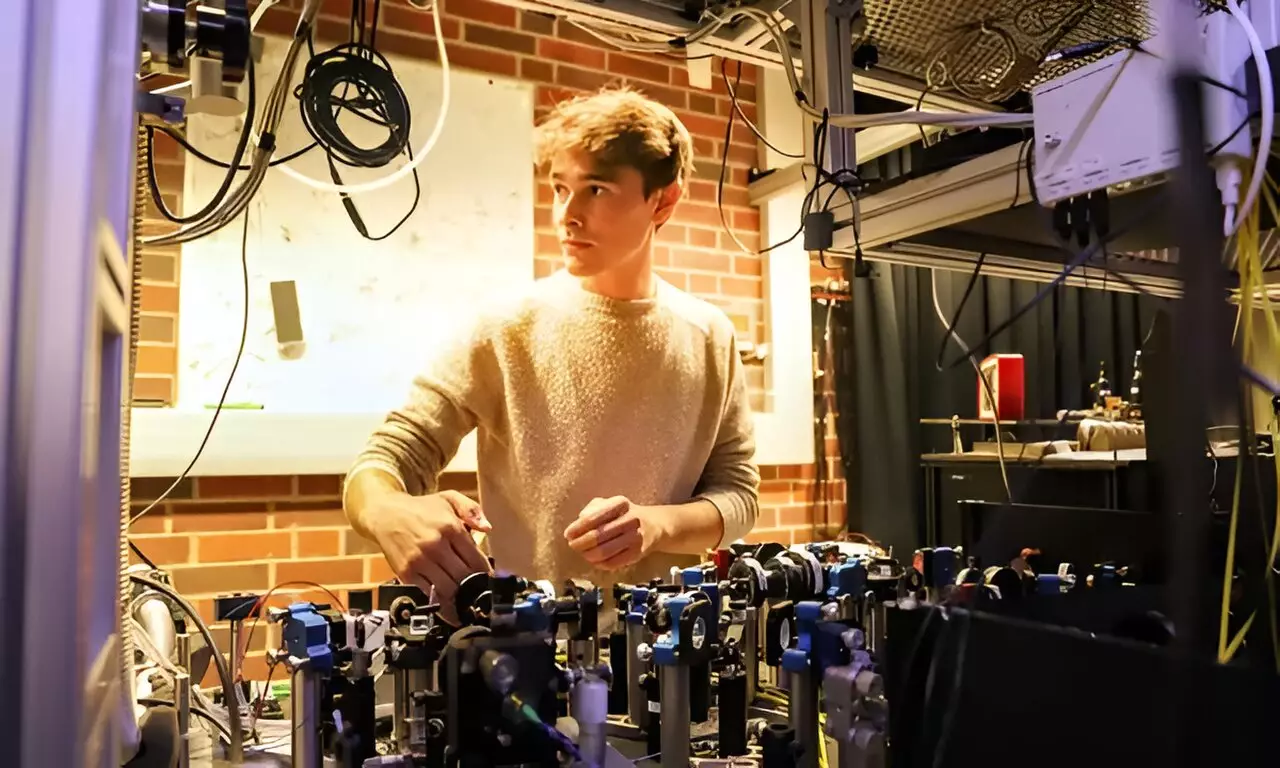In a groundbreaking study conducted by a team spearheaded by Robert Keil and Tommaso Faleo from the Department of Experimental Physics, the intricate interplay between entanglement and interference in multi-particle quantum systems has been explored. Collaborating with associates from the University of Freiburg, Germany, and Heriot-Watt University in the U.K., they have uncovered new facets regarding the behaviors of these complex systems. The work primarily aims to delve deeper into the mechanisms that govern how interference patterns manifest when entangled particles are involved, shedding light on an area that often baffles both researchers and enthusiasts alike.
Interference patterns, primarily seen in the realm of quantum mechanics, emerge as a result of the distinct behaviors of particles when they are subjected to various conditions. The study of two-particle interference, first brought to life by the pioneering experiment of Hong, Ou, and Mandel in 1987, set the framework for understanding these phenomena. However, when the system extends beyond two particles, the complexity escalates dramatically. Faleo emphasizes that the presence of entanglement introduces an additional layer of intricacy that significantly shapes these interference dynamics.
In layman’s terms, entanglement can be understood as a unique quantum connection between particles. Once entangled, these particles exhibit a collective behavior that remains intact regardless of the distance separating them. Such properties challenge our classical intuitions about separability and independence, inviting researchers to redefine their understanding of interaction on a fundamental level.
Faleo and his team focused their investigations specifically on how these interference patterns evolve when considering systems embroiled with entangled particles. The research demonstrates that the quantum states of individual particles alone do not account for the entire interference effect; rather, it’s the entanglement linking some of these particles that plays a crucial role. This revelation is pivotal as it suggests that we must analyze interference from a broader, more interconnected perspective.
When exploring the multi-photon interference phenomenon, the outcomes become more than just abstract mathematical abstractions. They reveal new collective behaviors that reflect the underlying interconnectedness of particles, a feature that differentiates multi-particle interference from its two-particle counterpart. Unlike classical interference, where additive patterns of wave functions stem from sheer amplitude, quantum interference endeavors into a realm where individual probabilities intersect and interrelate through entanglement.
The results from Faleo’s research signify a remarkable leap in our comprehension of multi-particle systems and their interference patterns. The insights gained could inspire future theoretical developments and bolster quantum technology applications. Quantum mechanics serves as a backbone for numerous technologies, including quantum computing, cryptography, and advanced sensing techniques. Understanding how entangled states influence interference can potentially refine these technologies, enhancing their functionality and efficiency.
The study also unveils an emergent type of collective interference effect that acts symbiotically with entanglement, underscoring the convoluted dynamics at play in multi-particle systems. This combination of quantum effects demands attention, not only for its theoretical implications but also for its practical applications in advancing quantum technology frameworks.
Ultimately, the research signifies a critical step towards demystifying the behavior of multi-particle quantum systems. As scientists like Keil and Faleo continue to bridge the gap between observation and theory, we may soon uncover even more profound implications regarding the nature of reality as dictated by quantum mechanics. Each breakthrough offers a clearer snapshot into the quantum world, inviting ongoing dialogue and exploration of both the foundational and advanced concepts that define our universe.
As the field continues to evolve, the implications of such research are poised to influence not just academic inquiries, but also practical applications that could transform technology as we know it. The ongoing study of entanglement and interference will remain vital in navigating the complexities of quantum systems, confirming the promise of quantum science in shaping the future.

